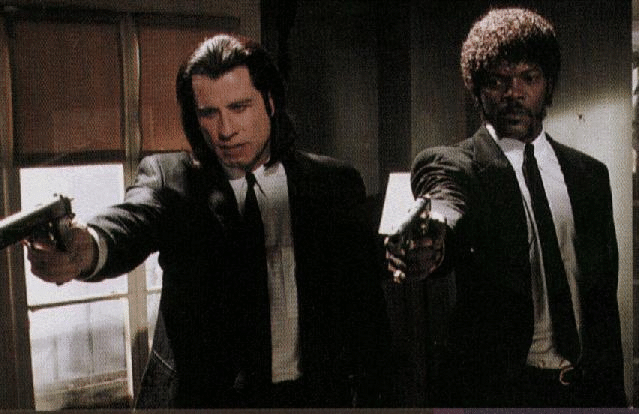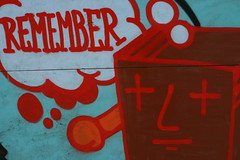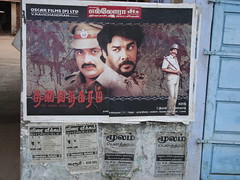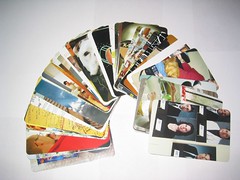
7 habits of highly effective people
 Here's a 5 page summary of Steven Covey's classic guide to being better at what you do.
Here's a 5 page summary of Steven Covey's classic guide to being better at what you do.Click on the habits below for a more detailed take on each one:
- Take the Intiative
- Focus on Goals
- Prioritise effectively
- Make everyone gain from a situation
- Listen before Leaping
- They Co-operate
- They reflect and repair their weaknesses
Tags : Book, career
on the value of viral
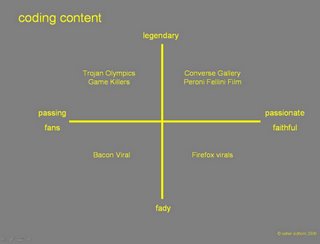 A simple chart that helps us understand not only does viral content have to be of a ridiculously high standard but it should be engednering a deeper relationship with your audience. The value of brilliant 'flash-in-the-pans' is limited.
A simple chart that helps us understand not only does viral content have to be of a ridiculously high standard but it should be engednering a deeper relationship with your audience. The value of brilliant 'flash-in-the-pans' is limited.Via Planningonsubversion
Art of the Start

Guy Kawasaki's 10 rules for entrepreneurs from this lecture
1. Aim to create meaning not money.
Money is the byproduct of doing one of these 3 things:
a) perpetuate good things b) end a bad thing c) make someone's life better
2. Jump to the next curve. Swim upstream. Change the rules of the game.
Barnes and Noble was the new standard, then came Amazon =10x improvement.
3. Don't Worry. Be Crappy.
The revolution will likely be shaky. Don't wait for the perfect world, prototype. Ship then test.
4. Churn Baby Churn.
A revolution is not a single event, it's a process. you need to constantly improve. As an entrepreneur you have to have a thick skin to negativity which makes it all the harder to listen for constructive criticism and constantly better your initiatives.
5. Polarise People.
Create something people either love or hate.
6. Niche yourself.
Offer something only you can (or will) that people are willing to pay for.
 7. Make Mantra.
7. Make Mantra.Not a complex mission statement created on a 2 day offsite boondoggle (see here for Dilbert parody generator). 3 or 4 words only please. AKA brand essence.
8. The 10/20/30 Rule.
10 slides.
2o mins. (in 60 min presentation, 20 mins should be presentation, 40 Q&A)
3o point font.
9. First make evangelists not sales.
create a cause. You know the drill.
10. Let a hundred flowers blossom.
Do things right and your ventures will take off in directions you never thought of - let them take on their own life. Apple never openly targetted DTP, but that was its lifeblood.
Wednesday, June 14, 2006
Thoughtless Acts
 This book made me realise that there is no such thing are no bad users, only bad design. If you don't know how to program your video recorder then it's the designers fault not yours (unless you are my mum, god bless)
This book made me realise that there is no such thing are no bad users, only bad design. If you don't know how to program your video recorder then it's the designers fault not yours (unless you are my mum, god bless)Design flaws (and therefore future oppertunities) are brought to bear in our small improvisations we have with the world, teasing out the gap between intended purpose and actual use, i.e. when we start finding coping mechanisms or modifying something becuase it just doesn't suit are needs well enough. Like any genuine insights these small improvs may be obvious but often overlooked. Developing an eye for them helps you become a better designer or, arguably, brand planner.
Thoughtless Acts is a book by another IDEO bod that outlines this technique. The website shares the thinking and invites contributors to upload their own images of 'small improvs' they have found in the world that expose design flaws or the way design coerces us to behave.
Share the wealth
 Web 2.0 allows us to share things better:
Web 2.0 allows us to share things better:Self-service > enable sharing. We all have needs to share stuff. Power drills are used for 10 minutes during their lifetime; cars are used for a few minutes a day; the result is huge inefficiencies in consumption. "The notion of sharing material resources is just exploding," particularly in Europe. People are designing sharing systems for space, equipment, time, services.
Via IFTF
Tuesday, June 13, 2006
Books Books Books
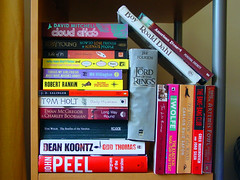 Manybooks.net converts copyright-free Project Gutenberg titles into useful formats for reading on Palm devics, iPods, and ebook readers.
Manybooks.net converts copyright-free Project Gutenberg titles into useful formats for reading on Palm devics, iPods, and ebook readers.Worth a rummage.
deliberate mistakes
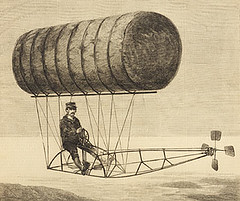 "Deliberate Mistakes" is a Harvard Business School theory starts with the hypothesis that too many successful companies are assuming too much about what makes them successful.
"Deliberate Mistakes" is a Harvard Business School theory starts with the hypothesis that too many successful companies are assuming too much about what makes them successful.Testing is all about validating a new theory, this is about using testing to challenge our closest held beliefs - if we can do that in a cost effective way. Small risk for a big gain.
The theory advocates that low-cost "mistakes" should be routinely and consciously made to deliberately 'fuck with the formula' to see whether dogma is clouding the path to even greater sucess.
Via this podcast
80s music vault
 Here's a genius vault of poptastic 80s music videos. Three words. Take On Me.
Here's a genius vault of poptastic 80s music videos. Three words. Take On Me.Thank god for people with too much time on their hands who persuade us to waste some of ours!
Via Plannerliness
for extra value see also Pitchfork's top 100 vids
Friday, June 09, 2006
stick with carrot
 This post outlines some advice for pursing 'fear' based social campaigning, e.g. anti-smoking, drink drive.
This post outlines some advice for pursing 'fear' based social campaigning, e.g. anti-smoking, drink drive.Thinking about Charles Tilly's 'Why?', i think the key is to stop people defaulting to the convention 'it'll never happen to me' and so close the conversation an intrusive 'fear' based ad might open up. Key to keeping the conversation going is an easy next step that someone can take on the journey to fully changing their behaviour. Follow your stick with some carrot.
10 Faces of Innovation
 More Ideo thinking. This time about how to get beyond the nay-saying of the devil's advocate and consider the different personas/roles it takes to inspire, generate great ideas and execute them.
More Ideo thinking. This time about how to get beyond the nay-saying of the devil's advocate and consider the different personas/roles it takes to inspire, generate great ideas and execute them.It reminds me of De Bono's 6 hats a bit (the devil's advocate being mr Black Hat, well, sort-of)
Anyway, here are those 10 faces of innovation:
(last 3 are most planner-ish, but of course, this is about being comfortable with role switching)
Hear author Tom Kelley talk these through here.
The Organizing Personas
1. The Hurdler is a tireless problem-solver who gets a charge out of tackling something that's never been done before with the smarts to sidestep any red tape or negativity.
2. The Collaborator is the rare person who truly values the team and is inspired to get the best out of them,
3. The Director, what a collaborator becomes when they are at the top of their game.
The Building Personas
4. The Experience Architect is that person relentlessly focused on creating remarkable individual experiences. This person facilitates positive encounters with your organization through products, services, digital interactions, spaces, or events. Whether an architect or a sushi chef, the Experience Architect maps out how to turn something ordinary into something distinctive—even delightful—every chance they get.
5. The Set Designer is focused on how to best manage the workspace to foster a creative culture.
6. The Storyteller captures our imagination with compelling narratives of initiative, hard work, and innovation.
7. The Caregiver guides the client through the process to provide them with a comfortable, human-centered experience.
The Learning Personas
8. The Anthropologist, observe how people interact ion the real world.
9. The Experimenter. A calculated risk-taker, a prototyper and arch collaboprator and poker-around-er.
10. The Cross-Pollinator draws associations and connections between seemingly unrelated ideas or concepts to break new ground.
IDEO approaches
 Watching Ideo CEO Tim Brown's presentation of IDEO's design approach (here) threw up some interesting approaches to problem solving
Watching Ideo CEO Tim Brown's presentation of IDEO's design approach (here) threw up some interesting approaches to problem solving- Analagous situations : When working on how to improve a hospital emergency room operations, Ideo spent time with a grand prix pit-stop crew to see how their team dealt with frequent emergency situations.
- Insights come from extreme users, lovers and haters, age of users, experience of product etc.
- Do something. Build-to-think. This elevates quick and dirty prototyping over big. Average project at Ideo goes through more than 100 prototypes. Don't need to be physical - but must be tangible.
-Use story-telling to develop, express and sell ideas through large organizations. Nike always produce a ripomatic ad when they design a new shoe to sell it to the rest of organization. The story needs to be there from the start. Ideo once built a 'stragetic expreince' for Motorola execs so they could 'live' the changes they were suggesting.
-Ideawall/Project Rooms - Visually recording scraps of inspiration allows them evolve as they are shared with collaborators and built up through layers of contribution. Can a blog serve this function, i think so.
Brands as Enablers

Director of Strategy at AKQA, Craig Walmsley on how web 2.0 is changing the demands on brands:
"It is not the planner’s fault that the answer “we should say X” is now the wrong one – they have not yet realized that the question has changed from “what should we say?” to “what should we do?” or, more importantly, “what should we let customers do?” This is the real question for Brands. Digital allows brands to be relevant enablers – letting customers do things in a way that makes sense for the Brand and to the customer. "
Read the full article here
Thursday, June 08, 2006
Why are good ideas a good idea?
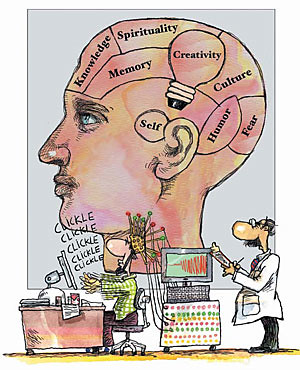 Insightful piece from Richard Huntington on the value of using great ideas to build brand meaning (versus sloppy old puns or whatever)
Insightful piece from Richard Huntington on the value of using great ideas to build brand meaning (versus sloppy old puns or whatever)Here
The Laws of Nike
 Nike Principles (1978)
Nike Principles (1978)1. Our business is change
2. We’re on offense. All the time.
3. Perfect results count – not a perfect process
Break the rules; fight the law
4. This is as much about battle as about business
5. Assume nothing.
Make sure people keep their promises.
Push yourself; push others.
Stretch the possible.
Expect success – always.
6. Live off the land.
7. The job isn’t done until the job is done.
8. DANGERS:
Bureaucracy
Personal Ambition
Energy takers vs. Energy givers
Knowing our weaknesses
Don’t get too many things on the platter
9. It won’t be pretty.
10. If we do the right things, we’ll make money damn near automatic.
via brandtarot
PS> Here's Scott Bedbury's version
Monday, June 05, 2006
Read the signs

Here's an intro to Semiotics, the study of culturals signs. Semiotics provides a way of uncovering the codes of communication embedded within a brand, its competitors, its product sector and the wider world of culture in which they exist. It gives you a detailed picture of the symbolic architecture of the brand and its environment - offering new insights and ideas for the brand's future. It's desk research, looking at the brand's communication (historical and current) as well as those of its competitors.
How brands become Icons
 Douglas B. Holt shows how iconic brands create "identity myths" that, through powerful symbolism, soothe collective anxieties resulting from acute social change.
Douglas B. Holt shows how iconic brands create "identity myths" that, through powerful symbolism, soothe collective anxieties resulting from acute social change.Holt warns that icons can't be built through conventional branding strategies, which focus on benefits, brand personalities, and emotional relationships. Instead, he calls for a deeper cultural perspective on traditional marketing themes like targeting, positioning, brand equity, and brand loyalty--and outlines a distinctive set of "cultural branding" principles. They're channels for expressing desire and relieving anxiety, a comforting myth if you like (accountants who drive harleys, emasculated men buying into the Bud story etc., people who buy apple through fear of technology)
More here
Sunday, June 04, 2006
beware the focus group

A complimentary piece to WHY (see below)
Malcolm Gladwell's audio lecture, Human Nature, explores why we can't trust people's opinions -- because we don't have the language to express our feelings. His examples include the story of New Coke and how Coke's market research misled them, and the development of Herman-Miller's Aeron chair, the best-selling chair in the history of office chairs, which succeeded in spite of research that suggested it would fail.
Focus group researchers take note...
WHY?

Why do we do what we do? Tilly sees reasoning as fundamentally social; we give reasons to justify decisions TO OTHER PEOPLE; thus, who those other people are and what our relationship is to them is the driver of the kind of reasoning we provide. In other words, what kind of explanation you'll give for your behaviour or attidue is not simply a case of 'the type of perosn you are' so much as who you are giving the explanation to and in what situation, i.e. what role you are playing (mom, boss, customer, lover, driving instructor) Reason-giving, Tilly says, reflects, establishes, repairs, and negotiates relationships.
conventions - conventionally accepted explanations. becuase i'm of a higher social status than you and i don't need to justify myself. Moms scolding kids. “Don’t be a tattletale”. i'm always messy! becuase i want to end the conversation, 'i wanna break up, it's not you, it's me.' Que sera, sera. Accidents happen. God's will.
stories - they circumscribe time and space, limit the number of actors and actions, situate all causes “in the consciousness of the actors,” and elevate the personal over the institutional. I can't quit smoking becuase my relationship with Sue is too stressful right now" (via Gladwell, Marriages thrive on stories. They die on conventions.)
codes - Then there are codes, which are high-level conventions, formulas that invoke sometimes recondite procedural rules and categories. The firm law of the Land. Only Elite members may board now. You are being turned down for the loan you applied for becuase of our strict credit checks.
technical accounts - Expert testimony. It's established that I know more than you about this subject, so i've got credability, so i'll demonstrate it with recourse to words you don't know or concepts beyond your current understanding.
Hear Gladwell talk about these in his diatribe that upholds unplanned creatity is not a poor cousin to its planned counterpart, but holds equal importance to us in both art and commerce.
Streamwriting
 Streamwriting is simply writing nonstop what is in your mind, unedited until your conscious mind gets out of the way and allows your superconscious to do the talking.
Streamwriting is simply writing nonstop what is in your mind, unedited until your conscious mind gets out of the way and allows your superconscious to do the talking.Word your problem using specific language and make the wanted outcome sound fun, exciting or pleasant. For instance, a question like "How can I earn an extra $1000 this month and enjoy the process?" would be better than "Make a $1000."
Then, beneath your question start writing everything that pops into your head. Write related and unrelated thoughts that come to your mind. Keep your pen on paper and do not stop writing to think or get back on track. Your brain knows the problem, so you don't need to consciously think about it. You need your conscious out of the way.
When you run out of ideas, keep writing anyway. Write "I am stuck" or "I can't think of anything to write." Don't worry your conscious will likely get bored and let the ideas flow. Or you will change the subject to your goal or another side road that leads to the breakthrough. Just relax and keep writing.
Via here
Saturday, June 03, 2006
offbeat records
 Quirky, charming and downright cringeworthy recordings from the vaults.
Quirky, charming and downright cringeworthy recordings from the vaults.365 project here
standout fav, Sister Gertrude Morgan, James Brown meets The Book of Revelations
runner up
ad agency creative freakout
(via RD)
Links

